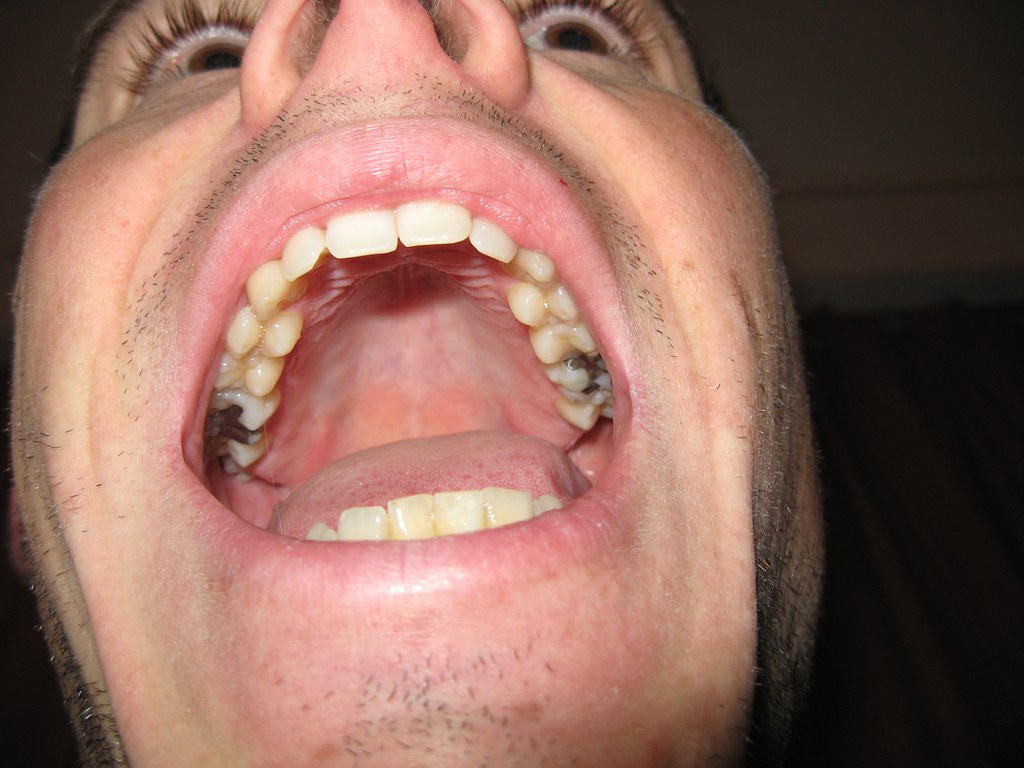
Recently the use of amalgam fillings has been banned in Europe for children under 15 and pregnant women.
Why? Because these so called 'silver' fillings contain mercury and mercury is very toxic. Over time the fillings give off a vapour which you breath in and which is absorbed into your blood. Most of this is removed and excreted by your kidneys. The amounts involved are very low and are generally deemed safe. However a few minutes spent on research using internet will find many sites which warn of the dangers from amalgam fillings:
- Kidney damage
- Brain damage
- Heart damage
The risks from each filling are low but accumulative. Dentists are resisting the change because mercury amalgam fillings are quick to do and last longer. BUT they shouldn't resist! Because it's the dental workers who face the main risk!
Let me interrupt the blog and tell you a story.
Years ago I taught chemistry to schoolchildren. At the time we used mercury to make barometers, played with it to grow hair on aluminium and 'silver' plate pennies. We also used benzene as a solvent and used asbestos mats to protect benches from hot Bunsen burners.
Benzene was the first to go. It was found to be carcinogenic so we teachers were advised to use toluene instead. Not because of a risk to children but because we chemistry teachers would be exposed to benzene vapour far longer than the children.
Asbestos was next. We knew asbestos fibers were dangerous for many years before the public became concerned. We thought we were safe using asbestos cement products and taught children tto wet asbestos sheets before they cut them and not to blow asbestos dust out of brake drums with an air line. Then we looked in the drawers where we stored the heatproof mats and found them full of dust! They had to go because we teachers were the ones at risk.
Mercury was a different matter. We already knew it was dangerous. Remember that expression 'as mad as a hatter'? This didn't come from Alice in Wonderland but from the fact that hatters were constantly exposed to mercury when they shaped felt into hats using mercury. It caused mental breakdowns.

We teachers stopped playing with it as soon as we shone a UV light on it and saw the vapour being given off - it goes purple under UV light. We dusted mercury spills with sulphur and vacuumed them up from the cracks in the floor. When we had to use it, we put it under water or did the experiments in a fume cuboard.
Dental workers are constantly exposed to mercury vapour!
Dental workers are constantly exposed to mercury vapour!
Now let me ask you. Do you really want to be treated by a mad or otherwise ill dentist?
- A series of research articles has shown that dental workers’ exposure to mercury can have behavioral, cognitive, and psychological impacts.
- Mercury affects the kidneys. Dentists and dental assistants have a higher risk of kidney function disturbance than other industrial workers.
- Dental workers have a higher rate of the use of prescription medication (for neuropsychological, neurological, respiratory, and cardiovascular conditions related to their occupational mercury exposure.
- Specific genetic traits have been associated with dental workers, their mercury levels, and memory recall, anxiety, and other neurobehavioral responses.
- Dental workers and risks of mercury allergies have been studied. Exposure to dental amalgam correlates with a higher prevalence of mercury allergies. Mercury allergies have been linked to autoimmune diseases such as amyotrophic lateral sclerosis (Lou Gehrig’s Disease) multiple sclerosis, and chronic fatigue syndrome, as well as other adverse health consequences.
- The dangers of exposure to mercury for pregnant dental workers have been recognized, and fertility issues and menstrual cycle disorders have been reported in female dental workers as well
I think it's time to ban the use of new mercury fillings entirely.